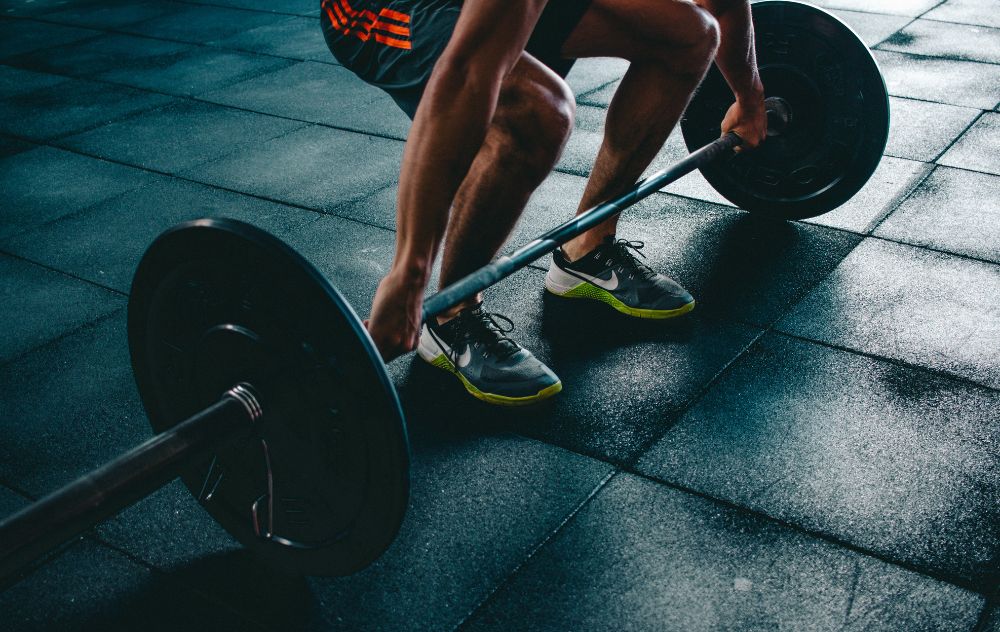When it comes to weightlifting, the key to unlocking your true power lies in finding the perfect Olympic barbell. These specialized bars are designed to withstand intense training sessions and help you push your limits. But how do you choose the right one?
First and foremost, consider the bar’s tensile strength. This is a measure of how much weight the bar can handle without bending or breaking. Look for a bar with a high tensile strength, such as 190,000 PSI or higher. Additionally, pay attention to the whip of the bar – this refers to its ability to store energy and create momentum during lifts.
Another important factor is the type of knurling on the barbell. Knurling provides grip and control during heavy lifts, so it’s crucial to find a bar with just the right amount of depth and aggressiveness. Lastly, don’t forget about sleeve rotation – this determines how easily the weights spin on the end of the bar. Smooth sleeve rotation helps reduce stress on your wrists and allows for more efficient and comfortable movements.
In the realm of strength training, where precision and performance intersect, the Olympic barbell stands as an iconic symbol of power and versatility. Crafted to exacting standards, this specialized barbell is the cornerstone of Olympic weightlifting and a staple in gyms worldwide. In this comprehensive guide, we’ll delve into the key features, applications, and considerations that make the Olympic barbell an essential tool for individuals dedicated to building strength, power, and mastering the art of lifting olympic barbell.
Anatomy of an Olympic Barbell: Precision in Design
Standardized Length and Weight Distribution
The Olympic barbell adheres to standardized dimensions, with a length of 7.2 feet (220 cm) and a weight of 20 kilograms (44 pounds) for men and 15 kilograms (33 pounds) for women. The consistent dimensions ensure uniformity across competitions and training environments, allowing lifters to transition seamlessly between bars.
Rotating Sleeves for Dynamic Movements
A hallmark feature of the Olympic barbell is its rotating sleeves, where weight plates are loaded. This design allows the plates to rotate independently of the bar, reducing stress on the lifter’s wrists during dynamic movements like cleans and snatches. The rotating sleeves enable a smoother and more controlled lift.
Versatility in Olympic Barbell Applications
Snatches for Explosive Power
The Olympic barbell is integral to the snatch, an explosive and technical lift where the lifter hoists the barbell from the ground to overhead in one swift motion. This exercise develops power, speed, and full-body coordination, making it a cornerstone of Olympic weightlifting.
Clean and Jerk for Total-Body Strength
The clean and jerk, another Olympic lifting classic, involves lifting the barbell from the ground to the shoulders (clean) and then propelling it overhead (jerk). This compound movement targets multiple muscle groups, promoting total-body strength and power.
Choosing the Right Olympic Barbell: Key Considerations
Material and Construction for Durability
Select an Olympic barbell constructed from high-quality materials such as alloy steel or stainless steel. The bar should have a durable coating, like chrome or black oxide, to resist corrosion and withstand the rigors of heavy lifting. The durability of the bar ensures a long lifespan and reliable performance.
Knurling and Grip for Secure Handling
Evaluate the knurling on the Olympic barbell, which refers to the textured pattern on the bar. A moderate, well-defined knurling pattern provides a secure grip without being excessively abrasive. This is crucial for maintaining control and preventing slippage during lifts.
Maintaining Your Olympic Barbell: Tips for Longevity
Regular Cleaning for Maintenance
Perform routine cleaning of the Olympic barbell to remove chalk, sweat, and debris. Wipe the barbell with a stiff brush or cloth, and consider using a light coating of oil on the sleeves to prevent corrosion. Regular maintenance preserves the appearance and functionality of the bar.
Proper Storage to Prevent Warping
Store the Olympic barbell horizontally on a designated barbell rack to prevent warping. Avoid leaning the bar against a wall or storing it vertically without support. Proper storage safeguards the straightness and integrity of the bar over time.
Conclusion: Olympic Barbell – Elevating the Art of Lifting
In conclusion, the Olympic barbell is more than a piece of gym equipment; it is a symbol of strength, precision, and athletic prowess. Whether you’re a competitive weightlifter or a fitness enthusiast, the Olympic barbell serves as a conduit for elevating your lifting capabilities. Embrace the power, versatility, and heritage encapsulated in this iconic piece of strength training equipment.




